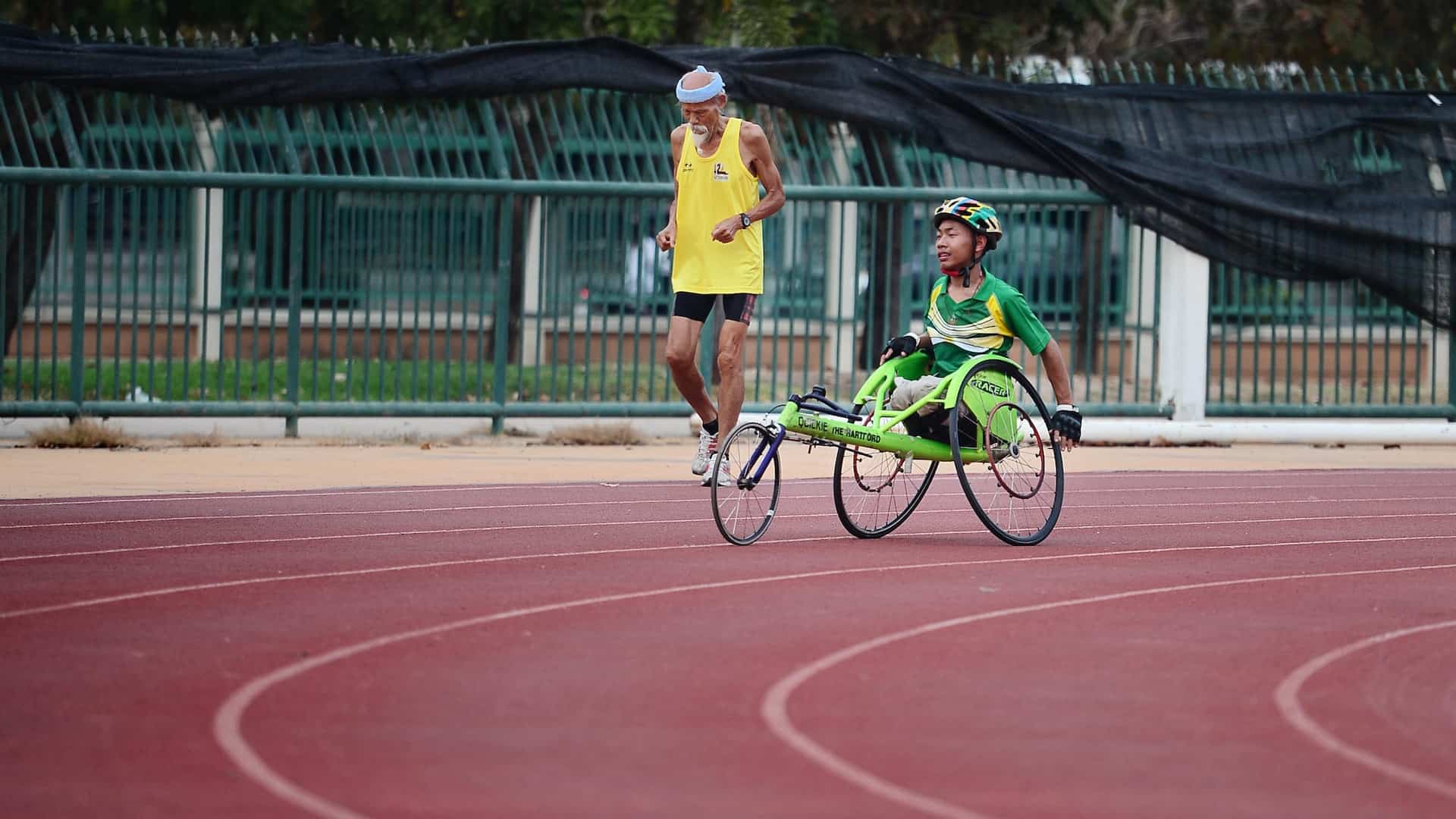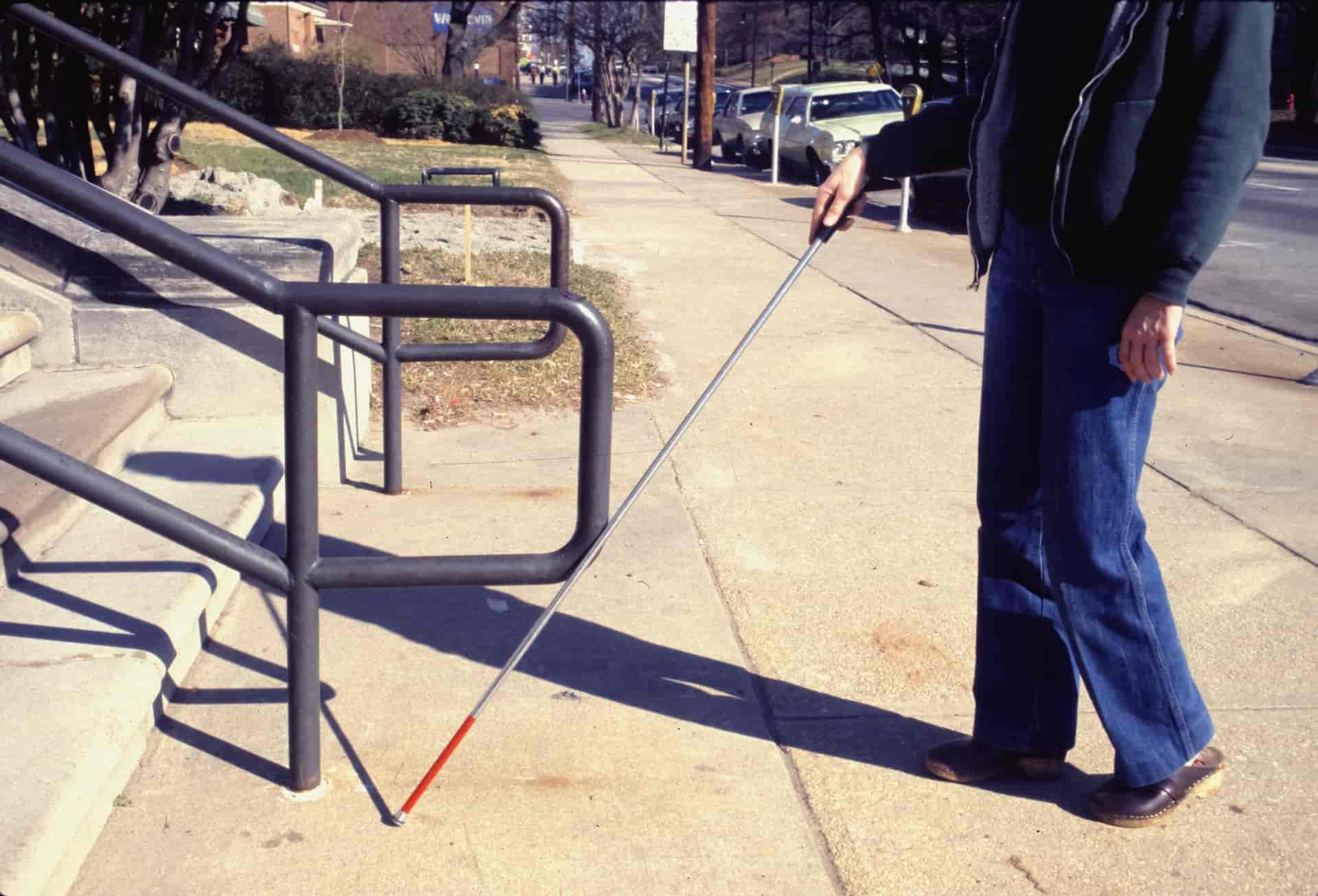Complete Resource Guide for College Students with Disabilities

Prospective college students with disabilities may feel overwhelmed as they begin looking into their options as they navigate college life. Fortunately, there have been marked strides made with adaptive technology and legislative advances to support college students with a variety of disabilities.
Create a Bold.org profile and use the scholarship search feature to access hundreds of exclusive scholarships.
- College Guide for Students with Disabilities
- Cross-Section of Student Disabilities
- Navigating the College Transition with Disabilities

College Guide for Students with Disabilities
In the not-so-distant past, a prospective college student with a disability would have very limited opportunities to access the myriad higher education options to other students. Fortunately, there have been marked strides made with adaptive technology and legislative advances to support college students with a variety of disabilities.
From the legislative standpoint, there are two primary drivers of the aforementioned changes: Americans with Disabilities Act and Section 508 of the Rehabilitation Act. The Americans with Disabilities Act (ADA) is a broad-based civil rights law enacted to protect individuals against discrimination based on a disability. In fact, the ADA of 1990 provides similar individual protections as the Civil Rights Act of 1964 plus a requirement to make reasonable accommodations as well as accessibility requirements for public accommodations.
Check out these disability scholarships right here from Bold.org to help you manage college costs!
What is Section 508 of the Rehabilitation Act?
Section 508 of the Rehabilitation Act of 1998 serves to clarify and strengthen provisions already in place that govern access to information in the Federal sector. The law includes all types of electronic and information technology which includes the usage of assistive technologies.
Get Matched to Thousands of Scholarships
Create your Bold.org profile to access thousands of exclusive scholarships, available only on Bold.org.
Create Free ProfileAccording to the Department of Education, if a college or university receives federal funds under the Assistive Technology Act they are required to ensure that information and electronic technology be made readily available to persons with disabilities in compliance with Section 508.
The Assistive Technology Act was created to help promote access and awareness of assistive technology. In other words, the objective of the Tech Act is to provide a level playing field for all persons of all ages and abilities in the United States by employing assistive technology in education, employment, and daily activities.
In this article, we will be covering a variety of disabilities along with ideas and resources to help a student make the transition from high school to college as well as to help make the transition from college into the workforce.
Cross-Section of Student Disabilities

Visual Impairment
The Center for Disease Control and Prevention (CDC) defines visual impairment as the type of vision that cannot be corrected to a normal level. The types of impairments can range from loss of visual acuity to visual distortion to blindness.
There are an estimated 10 million people in the United States that are visually impaired or blind with approximately 10% of those under the age of 40.
Assistive Technologies for Students with Visual Impairment:
- Talking Checkbook helps the visually impaired balance a checkbook, write checks, and sign printed checks.
- Spotlight Text eReader for individuals with vision loss.
- ODIN VI phone for blind and vision impaired.
- Big Launcher is an app that enlarges text.
- Project Ray provides a simplified platform for smartphones.
- Audible offers a plethora of books and programs in an audio format.
- Bookshare is an online library accessible for people with print disabilities.
- Eye-Pal converts printed material to speech, Braille, or text files on demand.
Important Resources for Visually Impaired Students:
- Pacers National Parent Center on Transition and Employment
- National Federation of the Blinds College Toolkit
- The Lighthouse Guild
- FamilyConnect College Checklist
- American Council of the Blind
- American Foundation for the Blinds College Prep
Attention Deficit Disorder (ADD) & Attention Deficit Hyperactive Disorder (ADHD)
Both Attention Deficit Disorder and Attention Deficit Hyperactive Disorder are diverse conditions that can affect a person's ability to focus, mood, and ability to develop a variety of interpersonal skills. According to the National Resource Center on ADHD, approximately 11% of children are affected by this behavioral condition with nearly three-quarters extending from childhood into adulthood.
The College Academic Support organization has put together a list of questions to ask the college admission department along with a curated list of frequently asked questions for students with ADD and ADHD.
Browse these exclusive ADHD scholarships to make college more affordable!
Assistive Technology for Students with ADD and/or ADHD:
- iStudiez Pro is an app that helps develop and enhance organization skills.
- Focus Gps assists a student with concentration, memory, and organization.
- AudioNote helps students take notes and record information.
- NaturalReaders is a popular text-to-speech resource.
- iTalk is an app that allows students to capture audio presentations as well as class lectures.
- Talking Calculator helps students by providing speech output.
- Flashcard Deluxe was designed to help students make electronic flashcards.
- MyStudy Bar is a multi-purpose app that helps students better write and study in school.
Important Resources for Students with ADD and/or ADHD:
- Children and Adults with Attention Deficit Hyperactive Disorder
- Totally ADD
- Attention Deficit Disorder Association
- National Institute of Mental Health
- AACAP ADHD Resource Center
- APA Resources and Publications
Cognitive Disabilities
The field of cognitive disabilities is a broad category encompassing various types of diagnosis including intellectual or cognitive disabilities, issues arising from brain injuries, learning disabilities, neurodegenerative diseases, and low-level deficits too mild to properly classify.
Cognitive disabilities or developmental delays can occur at any age. One of the most critical resources for a person with cognitive disabilities is a paucity of time. In other words, everything takes longer to process and complete which often leads to frustration and fatigue.
Assistive Technologies for Cognitive Disabilities:
- Visual Impact Pro is an adaptive technology created to help with step-by-step support to perform daily tasks of all kinds.
- Big Mack is a simple device that records a message for up to 20 seconds.
- Endeavor Desktop Pro is a computer interface that simplifies the complexity of a Windows-based environment.
- Cheap Talk 4 is a wheelchair-mounted tray designed to record messages and provide cognitive support.
- Voice Output Communication Aid or VOCA is a device that allows a person to speak by digitizing a message via a pre-recorded message.
Important Resources for Cognitive Disabilities:
- Think College
- A Guide to College for Students with Disabilities
- Learning Disabilities Association of America
- American Association on Intellectual and Developmental Disabilities
- The Council for Disability Rights
- Center on Technology and Disability
- National Collaboration on Workforce and Disability
- The Arc
Autism
Autism is a class of varied neurodevelopmental disorders that can adversely affect social, behavioral, cognitive, and communication skills. According Harvard Medical School, more and more students diagnosed with Autism Spectrum Disorder (ASD) are attending college than ever before. In fact, the Harvard Medical School whitepaper expects this trend to continue for the foreseeable future.
What is driving this trend of more students with ASD attending college?
A few factors seem to be coalescing together to drive this trend, notably the number of clinically diagnosed children in the last two decades coupled with adaptations made by colleges and universities.
On the demand ledger, the number of children and young adults diagnosed with ASD in the United States in 2000 was 1 in 150 and a few short years later it increased to 1 in 50. Inside these numbers, we can see changes in a few components increasing the prevalence of ASD which includes improved screening techniques, alternations in the diagnostic specifications, heightened awareness, along with improved tools for higher-functioning individuals with ASD.
On the other hand, higher education institutions have been working hard to improve the transition to college for students diagnosed with ASD and provide improved tools and better support systems while in college. The Journal of Autism and Developmental Disorders published a paper specifically related to the increase in college attendance following the completion of a nine-year longitudinal study. Data from the myriad ASD organizations point to an improved college campus engagement, reducing the stigma associated with autism, promoting self-advocacy, and systems to better reach students with ASD.
Assistive Technology for Autism:
- InfoGrip BIGtrack Trackball, BAT Keyboard, BigKeys Keyboard
- Sonocent Audio Notetaker, Recorder,
- Nuance Dragon Dictation
- Appy Autism apps Special Words, Autism Data Collection, Special Stories, Messenger Visual
- AutiPlan Visual Scheduler
Important Resources for Students with Autism:
- Autism Speaks College Guide
- Center for Disease Control and Prevention facts on autism
- Sonocent Resource Portal
- Nuance Blog
- Autism Now
- AutiPlan Blog
- Autism Society
- National Autism Association
Speech Disorders
The American Speech-Language-Hearing Association (ASHA) categorizes speech disorders into four primary categories: voice, stuttering, apraxia, and dysarthria. In a recent publication by the United States Department of Human and Health Services, approximately 8-9% of young children suffer from a speech disorder. By the time a child reaches the first grade, the estimated percentage of speech disorders drops to around five percent.
The frustrating aspect of a speech disorder is the fact that in many instances a cause is not readily known. Fortunately, we do live in an age where technology can detect variants in phonology, articulation, and intelligibility to diagnose and treat a wide variety of speech disorders.
Many colleges and universities have coursework like auditory systems disorders, language development, and auditory systems processes along with adaptive technology integrated into their programs to best serve individuals with speech disorders.
Assistive Technologies for Speech Disorders:
- Communication boards are a means to make language visible by creating an accessible means to display photographs, words, and/or symbols.
- ByteCools Cool Speech is a text-to-speech player for Windows-based computer systems.
- Speech Trainer was created to help with articulation and sound production.
- Cool Dictionary is an online resource that converts text to speech.
- TextSpeak offers a wide variety of text-to-speech amplifiers and OEM devices.
- Mayer-Johnson offers a large catalog of resources for speech-language development.
Resources for Students with Speech Disorders:
- Center for Speech Language Disorders
- American Speech-Language-Hearing Association
- Center for Hearing and Communication
- Center for Parent Information and Resources
- MedLine Plus
- National Association of Special Education Teachers
Hearing Impairments
The Better Hearing Institute has provided an outline of the differing types of hearing loss that include conductive, sensorineural, and a mix of conductive & sensorineural. Conductive hearing loss is defined as a condition or disease that interferes with the conveyance of sound through the middle ear cavity to the inner ear. On the other hand, sensorineural is essentially an inner ear or auditory nerve dysfunction.
A complete audiometric assessment may reveal damage to the Corti, specific nerve damage, and/or metabolic issues with inner ear fluid. The final type of hearing loss is a combination of the two aforementioned types of hearing loss where sensorineural is present coupled with conductive components through a portion of the audiometric range.
Hearing loss or hearing impairments currently affect approximately 15% of people in the United States over 18 years of age. In fact, the National Association on Deafness and Other Communication Disorders (NIDCD) produced statistics that reveal approximately 25 million adults in the U.S. suffer from tinnitus lasting five minutes or more. With the large numbers of individuals suffering from hearing loss or hearing impairments, it is interesting that less than 30% of adults older than 70 years of age have ever used a hearing device.
Assistive Technologies for Students with a Hearing Impairment:
- Beltone provides personalized hearing solutions for those suffering from hearing impairments and hearing deficiencies.
- AudioNote is a notepad and voice recorder with great reviews on the App Store.
- Widex is an international company that manufactures a range of hearing aids with true-to-life sound quality.
- ListenTech is a Utah-based company with a variety of listening technology to improve the classroom experience for students.
- Lyric has been dubbed as the contact lens for your ear which seamlessly integrates into your everyday life.
- Halo is StarKey's hearing aid specifically designed to work with an iPhone.
- Roger Pen is a wireless microphone designed to help a person better understand speech in noise over distance.
Important Resources for Hearing Impairment:
- Center for Hearing and Communication
- American Hearing Research Foundation
- Beltone Hearing Quiz
- StarKey Hearing Foundation
- American Academy of Family Physicians
- National Association for the Deaf
- Hearing Loss Association of America
Learning Disabilities
The Individuals with Disabilities Education Act (IDEA) defines a specific learning disability as encompassing one or more of the basic psychological processes involved in understanding or in using language, spoken or written, which disorder may manifest itself in the imperfect ability to listen, think, speak, read, write, spell or perform mathematical calculations.
The NCLD states in simple terms that a learning disability is essentially a neurological difference in the brain's structure and functionality that restricts the capability to receive, process, store, communication, and/or retrieve information. Well over half of the parents of children with learning disabilities surveyed have the expectation of their child(ren) attending college.
With some of the known challenges of helping students with a specific learning disability transition into college, it is highly important to set them up for success well in advance through research and great resources.
Assistive Technologies for Learning Disabilities:
- Info Select is software designed to simplify the process of organizing notes, to-dos, schedules, ideas, images, and contacts.
- Abbreviation Expanders is used in conjunction with a word processing program to create and store abbreviations for words that are frequently used.
- WatchMinder is wearable technology that can perform predetermined cues throughout the day.
- Alternative Keyboards are customized computer keyboards for students with learning disabilities.
- Optical Character Recognition (OCR) allows printed material to be easily scanned into a computer or smartphone. Examples include WYNN and Kurzweil 3000.
- Ginger helps students proofread documents in addition to spell check, language translation, text reader, rephrasing sentences, as well as a personal trainer.
- Co-Writer: Co-Writer is a text-to-speech piece of technology to provide students with different learning modalities.
- wordQ software with enhanced word predictive technology that can float on top of existing word processing programs.
Important Resources for Students with Learning Disabilities:
- Association on Higher Education and Disability
- Learning Disabilities Association of America
- National Center for Learning Disabilities
- IDEA.ED.GOV & IDEA Data
- Learning Disabilities Association of America
- LD Online
- Mobility International USA

Physical Disabilities
A physical disability is defined as one that adversely affects dexterity and/or mobility. A person with a physical disability may require help or equipment to help them walk while others do not need assistance. To give an example, a person without an arm is physically disabled but does not require a medical device to help them with mobility while a person with a spinal cord disability will often need a wheelchair or similar device for mobility.
The National Educational Association of Disabled Students (NEADS) provides guidance for the various types of physical disabilities including: quadriplegia, multiple sclerosis (MS), paraplegia, hemiplegia, cerebral palsy, polio, dystrophy, and absent limb/reduced limb functionality.
Regardless of the type of physical disability, a college student of any ability should participate in a variety of social and academic settings to their best. As such, colleges and universities have myriad resources available for a variety of persons with physical disabilities.
Assistive Technologies for Students with Physical Disabilities:
- IntelliKeys are customizable keyboards to individualize a person's approach to technology.
- Grid3 is a dynamic, symbol-based communication tool to help a student readily access apps and social media
- SmartNav 4 is a hands-free replacement for a computer mouse.
- Frog Pad is a keyboard designed to be used by a student with one hand.
- Sesame Enabled is the first hands-free smartphone that a person controls with head movements.
- PageFlip is a hands-free page-turning device controlled by pedals.
- Dragon Mobile Assistant allows a student to dictate notes, an email, and check the weather by simply speaking.
Resources for Students with Physical Disabilities:
- Disabled Sports USA
- NEADS
- National Organization on Disability (NOD)
- American Association on Health and Disability
- World Institute on Disability
- American Association of People with Disabilities (AAPD)
- Adaptive Sports Foundation
Navigating the College Transition with Disabilities
For people with disabilities, it is highly important to make life transitions as smooth as possible. When moving from high school to college, invest in yourself and research technology and resources listed above in addition to Going to College and AHEAD.
You will also want to keep an open line of communication with your advisor, counselor, and teacher to help with life's transitions. As part of your conversations with your advisor or teacher, you may find it useful to talk through adaptive technologies, course addends, modified examinations, interpreters, and priority registration.
As you look forward to graduation and beyond, plan on building bridges to community members and employers early in the process. People are always looking for great talent to add into their company and social circles. Networking effectively while in college can lead to long-lasting relationships down the line and potential employment opportunities.
Additional resources to help during your college to work-life transition phase include Youth Transition Services and the American Youth Policy Forum.
Scholarships on Bold.org
Here at Bold.org all scholarships are available to students with disabilities, and there are even scholarships available exclusively for students with disabilities. There are also scholarships available with a number of different requirements - such as academic achievement or what hobbies you have. Make an account and begin applying to scholarships now!